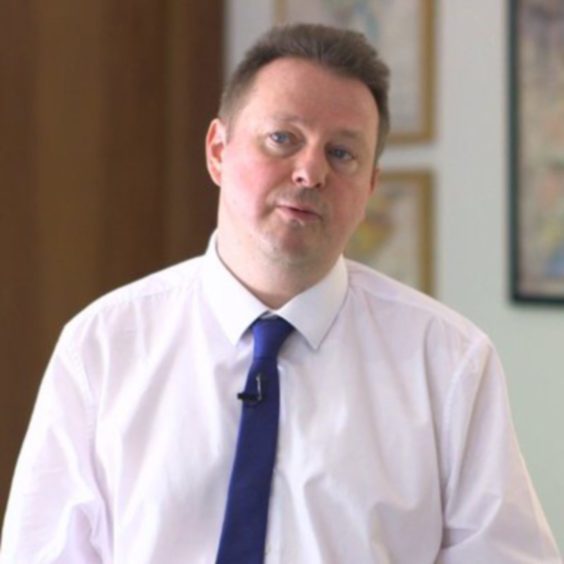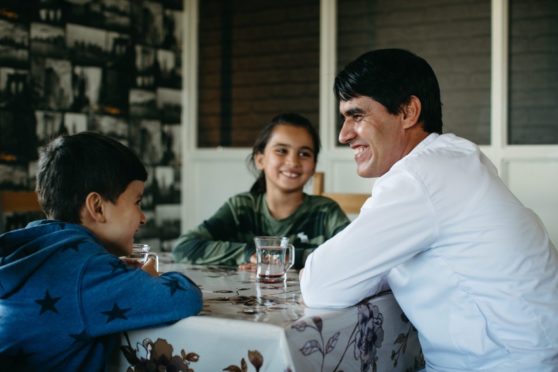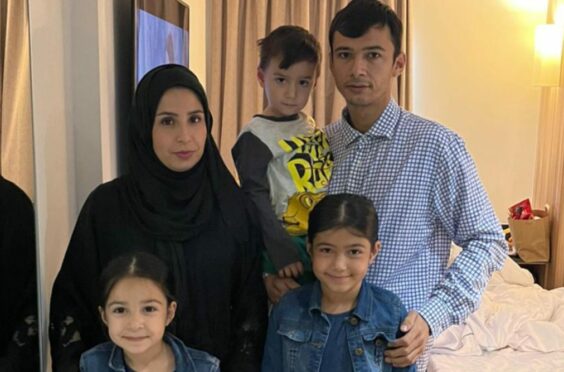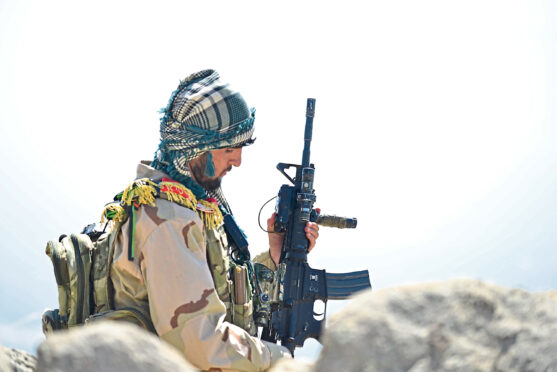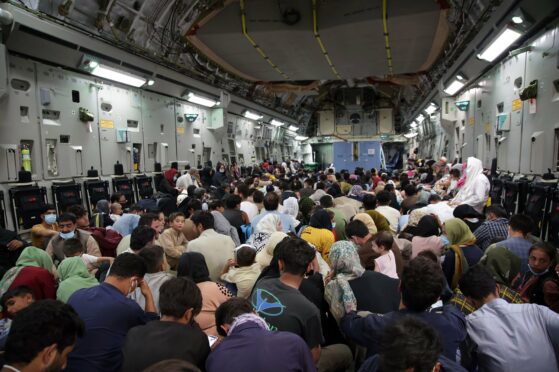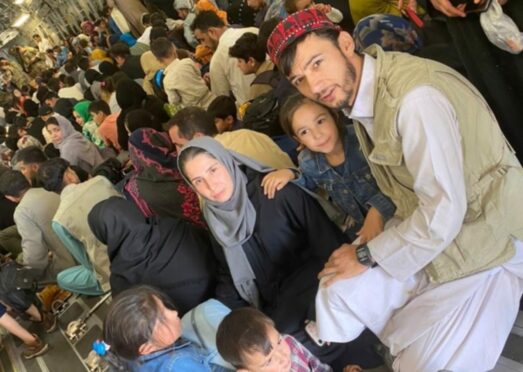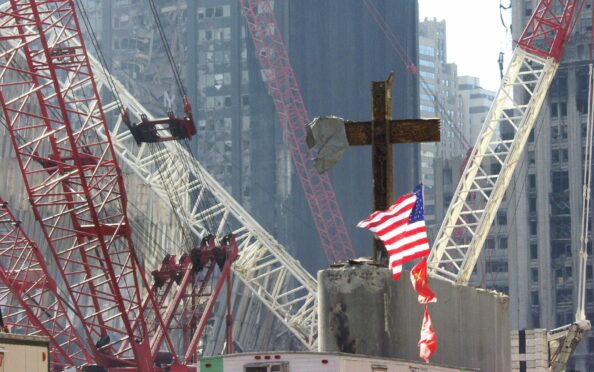
The images from New York City on the morning of September 11, 2001 would shock the world and shape the world. Beneath a clear blue sky, the events unfolding seemed unbelievable then and, to many of us, seem unbelievable still.
More than 3,000 people died in the US after Islamic extremists al Qaida flew hijacked commercial planes into the World Trade Center’s Twin Towers in New York and the Pentagon in Washington DC. The atrocity led to the wars in Afghanistan and Iraq and had international consequences still reverberating today.
Now, following America’s controversial withdrawal from Afghanistan and as the 20th anniversary of the 9/11 is marked on Saturday, Dr Timothy Wilson believes the events of that morning still have the power to shock.
The fallout
Wilson, who leads The Handa Centre for the Study of Terrorism and Political Violence at St Andrews University, says the fallout from 9/11 has been felt in war zones and on our streets.
He believes the ensuing wars have seen an erosion of human rights and the loss of standing of the US and UK in the eyes of the world, while at home lone-wolf attacks have resulted in an ambient public fear that has overtaxed security services, compromised civil liberties, and fuelled a growth in dangerous, domestic “far-right” extremism.
He said: “The forgotten war – Afghanistan – is back in the headlines and bookends reflections on the consequences of 9/11 which have undoubtedly been profound.
“The scale of the 9/11 attack was audacious, shocking and, for the terrorists, lucky. There are not many conspiracies where you can get together at least 19 operatives, all the back-room logistics, and manage to pull it off without someone giving something away somewhere that security services pick up and know what to make of.
“Twenty years on, we can see a bit more clearly that 9/11 does fit some other features of modern terrorism, which is, in rich, modern Western states, a phenomenon of the cracks. It happens in the gaps where bureaucracies aren’t looking, where the CIA and the FBI fall over themselves because one is looking at domestic threats and one is looking at foreign threats and no one is looking at a foreign threat to domestic targets.
“With hindsight, it is bizarre, because there had, in 1993, been a massive truck bomb that had nearly felled one of the towers of the Twin Towers complex. So Islamist extremists had already signalled that the US was a target. But the conventional wisdom in the 1990s in many circles was that terrorism had been a Cold War problem, a phenomenon sponsored and encouraged by the Soviet Union.”
Wilson said that led to a “switching-off of analytical and policy attention to terrorism”.
“So an attack that killed 3,000 and came out of an azure blue unclouded sky – literally and metaphorically in terms of American perceptions – was always going to cause an earthquake,” he said.
“The natural synergy then was to move towards a forward-facing posture that attempted to fight terrorism over there before it came over here. In other words, it unleashed the war in Afghanistan and later, even more disastrously, in Iraq, all the while allied with a massive ramping-up of a security state at home. Rather than trying to think about root causes or the ways in which terrorism can reflect society, it tended to be seen as an external threat.
“It is a tribute to the status and reverence in which America is held that 9/11 was seen by many as an attack on the West. But it was assumed, wrongly in my opinion, that all previous knowledge and experience of terrorism was obsolete. That was the dominant assumption right across the Bush administration and relative security services. And it was also there in the Tony Blair administration. He said his thinking on terrorism changed immediately on 9/11.
“What was striking was the bonfire of restraint in terms of human rights and how we treat enemy combatants on the battlefield. That has been pretty disastrous and erosive of liberal values at home and the standing of Western countries internationally. Rendition gulags such as Guantanamo Bay, led a fairly straight road to the horrendous abuses later at Abu Ghraib prison in Baghdad, Iraq.
“In terms of the legacy for civilians at home, what is striking is the way in which a threat that seemed to be fading in the late-1990s has suddenly become a constituent part of our lives. The September 11 attack was atrocious but it wasn’t climate change. Climate change is a threat to civilisation, 9/11 is only capable of ending civilisation if we allow it to. On an individual level, for anyone caught up in a terrorist attack it is devastating, but at a society-wide level, the threat is government over-reaction.
“In the days of the IRA in the 1980s and 90s, terrorism was seen as overspill from Northern Ireland. Now the whole of Prevent duty is all about trying to stop terrorism before it happens. To identify who might be a risk and who might be at risk from radicalisation. One is to target the individual and the other the rest of society.
“Societies and governments in Europe tend to involve police, social workers, primary school teachers, the NHS and mental health. It has created an early 21st Century dilemma in terms of security that is hard to manage, and that depends on public expectations of being kept safe. But none of this stuff from al Qaida and other groups is really an existential threat to society.
“In the 1990s, MI5 was probably keeping an eye on a few hundred people they thought might be involved in the provisional IRA. Now their SOI (suspects of interest) run into thousands.” Wilson said the demands on security services were “enormous” and “overwhelming” and “the dilemmas with civil liberties pretty intractable”, with innocents being reported or investigation and occasional “wannabe” terrorists slipping through the cracks.
“What al Qaida did with 9/11 is light up a cause in massive neon lights that over time, fuelled by the social media revolution, has attracted the wannabes and misfits,” he said. “September 11 and its death toll was eye watering, but actually one could see that as the forerunner to the use of vehicles and knives in terrorist attacks.
“You wouldn’t have done that 40 years ago because if you had mown people down with a car, there wasn’t a street full of camera phones to record it. Terrorists need the audience that comes with our mobile phone films. There is a communicative function in which the direct victims don’t tend to be the real targets – those poor devils caught in attacks are there merely for fodder for advertising; to make a point to other governments.”
Toll on mental health
These periods of high alarm carried a mental health cost to the public. More concerning, he said, was “ambient fear and that is dangerous”. He said: “The sense of an insecure world, of a global Islamist rebellion of various sorts against Western power, is surely key to understanding the rise of the far-right” and its “much smaller extremist right violent fringe.
“It is hard to make the case that a major terror attack like the Manchester Arena bombing of 2017 isn’t an existential threat when the headlines are full of 16-year-old girls whose birthday trip has ended in tragedy”.
Looking to the future, the expert said: “I am conflicted about the Afghanistan withdrawal because the way it has been done has been horrendous and will undoubtedly embolden Islamist radicals all around the world who will claim it as a victory and as having defeated two super powers. They will be feeling buoyed up by that.”
He expected terrorism to remain, adding: “The restrictions on personal liberties, the awareness and vigilance culture is here to stay. But great cities and societies survive. It is not going to bring us to our knees; life will go on. Western countries and Europe since the end of the Second World War have had a good run. From that point of view, we are complacent and tend to overreact to the attacks. There tends to be an easy assumption that there is an existential threat to the roots of society. There is not if we don’t let there be.”
Killing Strangers, by Timothy Wilson, Oxford University Press

Enjoy the convenience of having The Sunday Post delivered as a digital ePaper straight to your smartphone, tablet or computer.
Subscribe for only £5.49 a month and enjoy all the benefits of the printed paper as a digital replica.
Subscribe